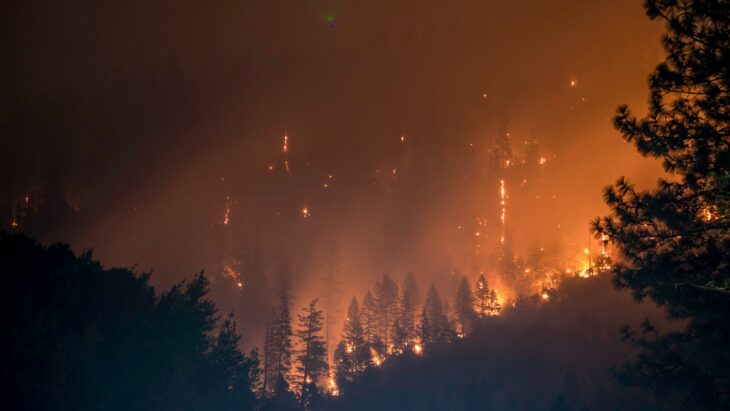Wildfires kill vegetation and release greenhouse gases like carbon dioxide into the atmosphere. Scientists have shown that regrowth of this vegetation can recapture as much as 80% of the carbon dioxide. They’ve studied post-fire recovery periods and what factors affect local regrowth, but they haven’t yet assessed these on a global scale.
Hongtao Xu and colleagues recently studied post-fire regrowth using satellite and drone imagery. They gathered information from these datasets on the amount of solar radiation plants capture, referred to as Gross Primary Productivity or GPP. They also used data from a burned map of the globe to measure how much chlorophyll was produced by forests that experienced fires between 2004 and 2021. Xu and colleagues compared how much chemical energy was produced by the burned vegetation up to 36 months before these fires to note when the values stabilized.
The team calculated that it took an average of 11 months for the vegetation to recover the same GPP level it had before the fire. They also found that recovery time depended on the type of biome in the area. For example, savannahs and evergreen needle forests took 14 and 15 months to recover, while grasslands and shrublands took only 7 and 11 months to recover. Recovery periods were also longer for vegetation in the Northern Hemisphere, especially in hotter, drier climates. In total, Xu and his team found that 87% of the burned vegetation areas in the study reached pre-fire productivity after 2 years.
These results led the team to their next question: If vegetation recovery only depended on the type of biome, why did it take longer in some regions with similar biomes? To address this question, the researchers used a computer simulation called a random forest model. This model simulated forest changes and recovery based on variables derived from 80% of their burned vegetation data. They used the model to explain variations they observed between the GPP and other databases by changing the variables and seeing how they affected the model.
The team tested 2 categories of environmental variables first: pre-fire variables and post-fire variables. When they increased pre-fire variables, such as productivity and combustible materials, the model predicted longer vegetation recovery periods. Post-fire variables like shortwave radiation led to shorter recovery periods if the conditions remained similar to pre-fire conditions, but the more they changed the post-fire variables the longer the vegetation took to recover. They found that changes in post-fire variables actually impacted the recovery process more than changes in pre-fire variables.
Next, the team tested how 6 environmental variables related to the plant and the soil, like its moisture levels, affected the model. The scientists tested pre-fire productivity levels, plant growth, UV radiation, soil moisture, and air temperature. They also tested the difference between the amount of water in the air and the amount of water it could hold, called the vapor pressure deficit. The scientists found that these factors all depended on the dryness, or aridity, of the climate. In more arid climates, soil moisture and vapor pressure dominated the recovery process, so the recovery time decreased when the soil was moist and the vapor pressure was low.
They also noticed that these interactions affected the environment differently depending on the biome. In a moisture-limited environment such as grasslands, recovery periods were shortened as vapor and air temperatures decreased. The opposite was true in wet ecosystems like evergreen needle forests, where higher vapor and air temperatures led to shorter recovery times.
Wildfires are becoming more prevalent, so scientist want to understand their impacts. These researchers suggested that their models provide new insights into how much carbon can be reabsorbed by forest regrowth after fires, and how quickly. They indicated that this information should help scientists more accurately predict carbon in the atmosphere, related to future climate change.


